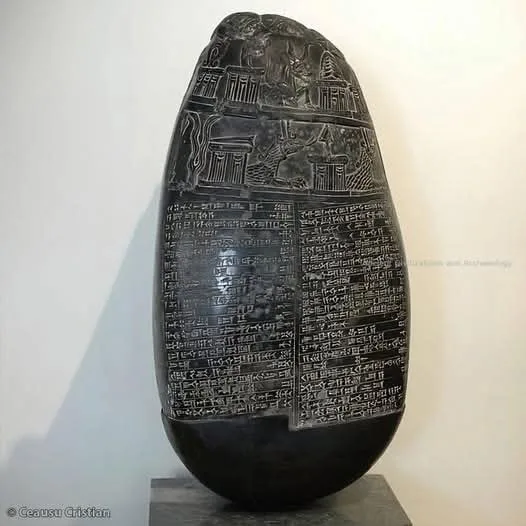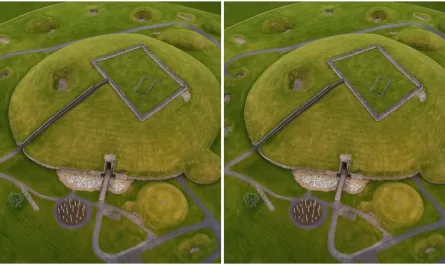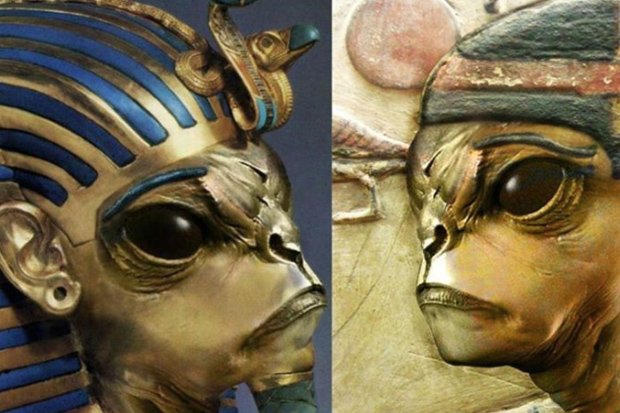Our story begins in 1786, not with an archaeologist, but with a French botanist named André Michaux. Known for his vast collections of plants and seeds, Michaux was on an expedition in Baghdad when he stumbled upon something truly extraordinary near the ruins of Taq Kasra. It was a striking black stone, adorned with intricate carvings and enigmatic writing. This was no ordinary rock; it was a window into a lost civilization.
Michaux, captivated by its mystery, decided to keep this fascinating find with him. For three and a half years, this ancient artifact traveled with the botanist before finally making its way back to France.

From Private Collection to Public Revelation: “Le Caillou Michaux”
Upon his return, Michaux eventually sold the stone in 1800 to the French Museum of Antiquities for about 1,200 francs. The museum, recognizing its unique nature, housed it in the National Library. Its arrival in Europe was nothing short of a revelation. Historians across the continent buzzed with excitement. Why? Because this kudurru was, essentially, the first complete written proof of ancient Mesopotamian civilization to finally grace European soil. Up until then, knowledge of this incredible culture was limited, often based on fragmented accounts. This stone offered a tangible, direct connection.
Decoding the Past: What is a Kudurru?
To truly appreciate the Michaux Kudurru, we need to understand what it is. A kudurru (Akkadian for “frontier” or “boundary”) is a type of stone document primarily used in ancient Babylonia, especially during the Kassite dynasty and later periods (roughly 16th to 7th centuries BC). These steles served as boundary stones and, more importantly, as records of land grants, gifts, or even legal decisions.
The original kudurrus were often stored in temples, serving as sacred, protected legal records. The person receiving the land grant would typically be given a clay copy for their own use. They often contained:
- A detailed description of the land being granted, including its boundaries.
- The names of the donor (often the king) and the recipient.
- A list of witnesses.
- Elaborate curses invoking various gods upon anyone who dared to violate the terms of the grant or damage the stone itself. These curses were a powerful deterrent, backed by divine authority.
- Symbols of various deities, which were believed to protect the document and the land it described. These symbols also offer invaluable insights into ancient Mesopotamian religious beliefs and even early astronomical observations.
The Michaux Kudurru, specifically, dates to between 1099 and 1082 B.C., during the reign of Marduk-nadin-ahhe in Babylon. It’s a robust piece, standing about 46 centimeters tall, 20 centimeters wide, and weighing a substantial 22 kilograms. The stone is covered with 95 lines of cuneiform text and features 21 distinct symbols. Intriguingly, it records a transaction dealing with a piece of land, detailing a father’s gift of farmland as a dowry to his daughter, Dur-Sharginaiti. This was a rare form of gift, known as a mulugu, which allowed the daughter to retain personal control over the land—a truly progressive detail for its time!
Unlocking the Cuneiform: The Power of Translation
The journey to fully understand the Michaux Kudurru was a long one. The initial transcription began in 1861 by the pioneering Assyriologist Henry Rawlinson, one of the key figures in deciphering cuneiform. The complete translation, however, wasn’t finalized until 1895 by Jules Oppert. This painstaking work unveiled the detailed legal and religious contents of the stone, providing unprecedented insight into Babylonian society, land ownership, and their pantheon of gods.
A Game-Changer for European Understanding
The Michaux Kudurru was far more than just an ancient rock. It was a tangible link to a sophisticated civilization that had flourished millennia ago. It provided concrete evidence of their legal systems, religious practices, land tenure, and social structures. Before this, Mesopotamian culture was largely a hazy concept in European thought. This single artifact helped to illuminate a vast, complex, and highly advanced society, forever changing how Europeans perceived the ancient world. It served as a vital cornerstone in the emerging field of Assyriology and fueled a growing fascination with the “Cradle of Civilization.”
Today, the Michaux Kudurru, affectionately known in France as “le Caillou Michaux” (Michaux’s Pebble), remains a star exhibit, a silent storyteller of a distant past that continues to captivate and educate.





